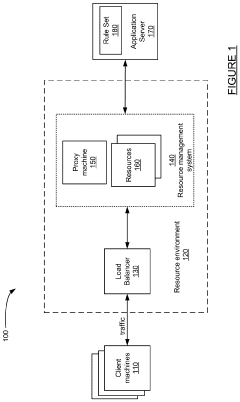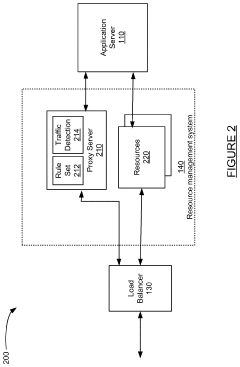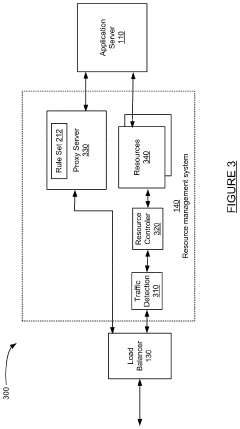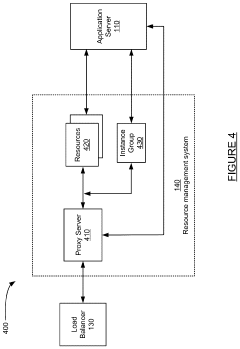Research on automation technologies to improve efficiency and reduce costs - Eureka
OCT 8, 20243 MIN READ
Generate Your Research Report Instantly with AI Agent
Patsnap Eureka helps you evaluate technical feasibility & market potential.
Automation Technology Background and Goals
The primary objective is to explore and evaluate automation technologies that can enhance operational efficiency and reduce costs across various industries. This involves analyzing current market demands, assessing the maturity and challenges of existing automation solutions, and identifying potential areas for innovation and technological breakthroughs.
Key aspects include examining the evolution of automation technologies over time, highlighting major milestones and advancements. Additionally, it entails scrutinizing the competitive landscape, profiling key players and their market positions, as well as dissecting prevalent automation approaches and their technical underpinnings. Ultimately, the goal is to forecast future development trajectories and propose novel automation strategies that could drive significant improvements in productivity and cost-effectiveness.
Key aspects include examining the evolution of automation technologies over time, highlighting major milestones and advancements. Additionally, it entails scrutinizing the competitive landscape, profiling key players and their market positions, as well as dissecting prevalent automation approaches and their technical underpinnings. Ultimately, the goal is to forecast future development trajectories and propose novel automation strategies that could drive significant improvements in productivity and cost-effectiveness.
Market Demand for Automation Solutions
- Automation Demand Drivers
Rising labor costs, need for improved efficiency, quality consistency, and safety in operations drive demand for automation solutions across industries. - Market Size and Growth
The global industrial automation market is projected to reach $325 billion by 2027, growing at a CAGR of 8.7% from 2020 to 2027. - Industry Adoption
Manufacturing, automotive, electronics, food & beverage, and pharmaceuticals are leading industries adopting automation to streamline processes and enhance productivity. - Regional Trends
- Asia-Pacific is the largest and fastest-growing market due to rapid industrialization and labor cost advantages.
- North America and Europe have mature adoption driven by technological advancements and regulatory compliance.
- Emerging Trends
- Integration of AI, IoT, and cloud computing for intelligent automation systems.
- Demand for collaborative robots (cobots) to work alongside humans.
- Adoption of Industry 4.0 principles and smart factory initiatives.
Current State and Challenges in Automation
- Automation Adoption Challenges
High initial costs and long payback periods hinder widespread adoption, especially for small and medium enterprises. Lack of skilled workforce and resistance to change also pose obstacles. - Integration Complexities
Integrating automation systems with legacy infrastructure and ensuring interoperability across different platforms and protocols can be challenging and time-consuming. - Data Quality and Cybersecurity Risks
Automation systems rely heavily on data quality, and poor data can lead to errors or inefficiencies. Additionally, cybersecurity threats pose risks to automated systems and processes. - Regulatory and Ethical Concerns
Automation technologies may raise concerns about job displacement, privacy, and ethical issues, which can lead to regulatory hurdles or public resistance.
Key Players in Automation Industry
The automation technology industry is growing, driven by increasing demand across sectors. Established leaders like Rockwell Automation, Panasonic, and Siemens showcase high technical maturity, while emerging players like Harness and Lansion contribute to evolving competitive dynamics.
Rockwell Automation Technologies, Inc.
Technical Solution: Rockwell Automation offers automation technologies like PLCs, HMIs, and industrial control systems to improve efficiency and reduce costs through advanced automation and data analytics.
Strength: Extensive experience in industrial automation. Weakness: High initial investment costs.
ABB Group
Technical Solution: ABB provides automation solutions like robotics, machine automation, and digital services. Their ABB Ability platform integrates IoT and AI to optimize processes, enhance productivity, and reduce costs.
Strength: Strong global presence and diverse portfolio. Weakness: Complexity in integration with existing systems.
Core Innovations in Automation Technologies
Intelligent autostopping of resources in computing environments
PatentPendingUS20230401095A1
Innovation
- Automatically shutting down idle resources to improve resource utilization and reduce costs for customers.
- Implementing a traffic detection module to identify idle resources.
Regulatory and Compliance Issues in Automation
Automation technologies have gained significant traction in recent years, driven by the need for improved efficiency and cost reduction across various industries. These technologies encompass a wide range of solutions, including robotics, artificial intelligence, machine learning, and process automation. By automating repetitive and labor-intensive tasks, organizations can streamline operations, enhance productivity, and minimize human errors. The adoption of automation technologies has the potential to revolutionize manufacturing processes, optimize supply chain management, and transform service delivery models. However, successful implementation requires careful consideration of factors such as integration with existing systems, workforce training, and ethical implications. Overall, automation technologies present a promising avenue for organizations to remain competitive and adapt to the ever-evolving business landscape.
Cost-Benefit Analysis of Automation Implementation
Automation technologies have gained significant traction in recent years, driven by the need for improved efficiency and cost reduction across various industries. These technologies encompass a wide range of solutions, including robotic process automation (RPA), artificial intelligence (AI), machine learning (ML), and the Internet of Things (IoT). By automating repetitive and labor-intensive tasks, organizations can streamline operations, minimize human errors, and reallocate resources to more strategic initiatives. The potential benefits of automation extend beyond cost savings, as it can also enhance productivity, quality, and customer satisfaction. However, successful implementation requires careful planning, change management, and a thorough understanding of the technological landscape and market dynamics.
Unlock deeper insights with Patsnap Eureka Quick Research — get a full tech report to explore trends and direct your research. Try now!
Generate Your Research Report Instantly with AI Agent
Supercharge your innovation with Patsnap Eureka AI Agent Platform!



